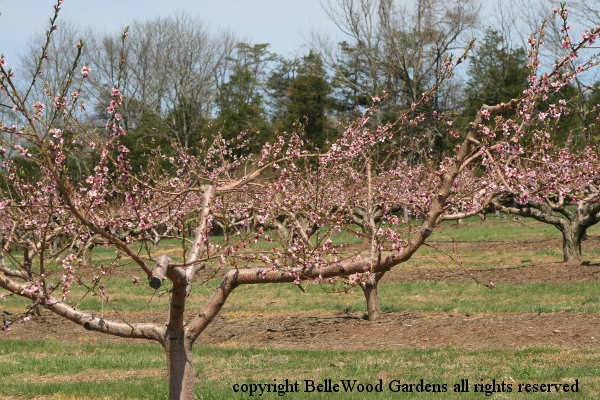
.
If you have any comments, observations, or questions about what you read here, remember you can always Contact Me
All content included on this site such as text, graphics and images is protected by U.S and international copyright law.
The compilation of all content on this site is the exclusive property of the site copyright holder.
The seasons are turning. Asparagus, local asparagus, is available at some local farm stands.

And up in Dick Nagy's orchard the peach trees are in bloom.
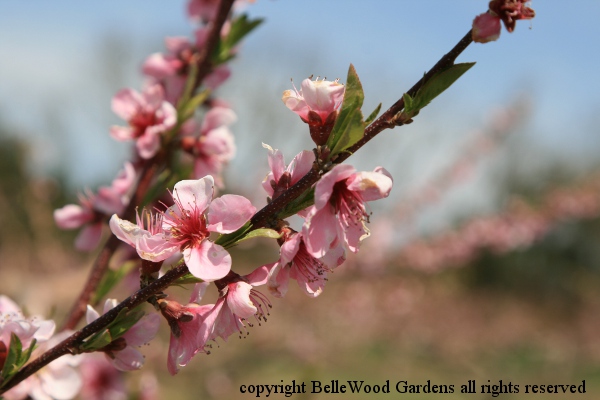
Such promise, of summer's luscious, juicy peaches.
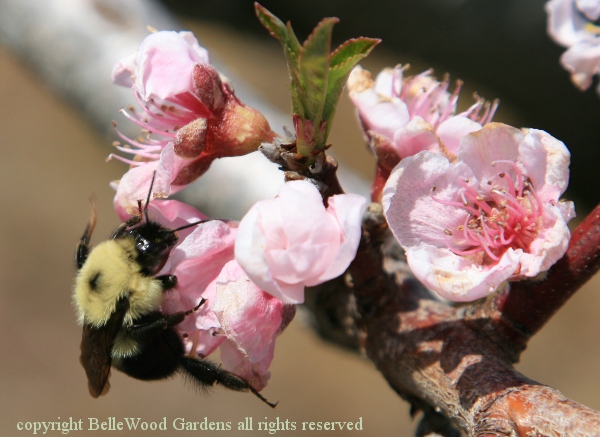
But there's a wait. And work. First, pollination. This is one of our big native bumblebees.
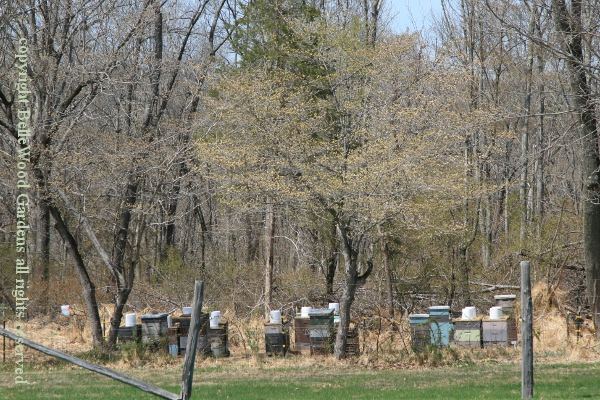
Dick has hives, outside the orchard. They're provided by a local bee keeper.
Not so much for peaches, which tend to be self-pollination. More for the apples.
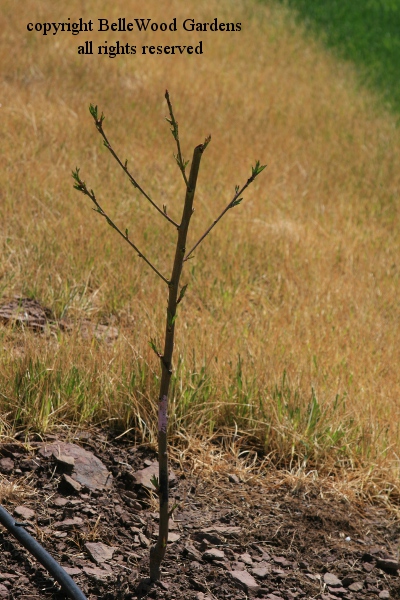
Some of the work is pruning. You might have noticed the graceful goblet-like shape of the peach trees in the first inage. Doesn't happen on its own. Rather, it takes careful training right from the begining. Like this brave little peach tree, newly planted. With nearly surgical precision Dick pruned it back, hard. It is important to reduce the branches and start it off into the correct form right from the beginning. It, and its siblings, won't fruit this year. Perhaps not even next. When it does begin to bear (and all the nascent fruit begins to form) only a few fruits will be allowed to reach maturity. Even the well established trees receive a thinning. This means that the remaining peaches will reach their best size rather than stunted puny miniatures.
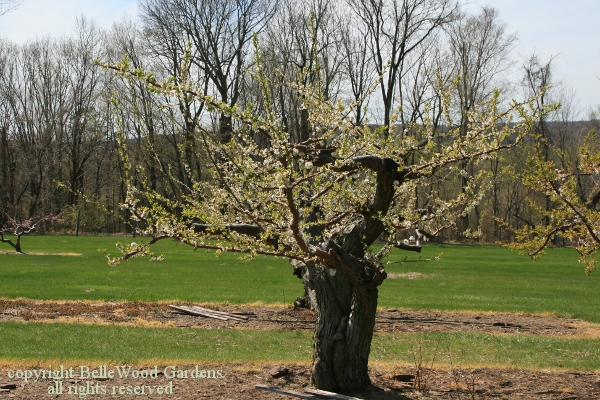
Some trees bear well into old age. Plums, for example, like this venerable specimen.
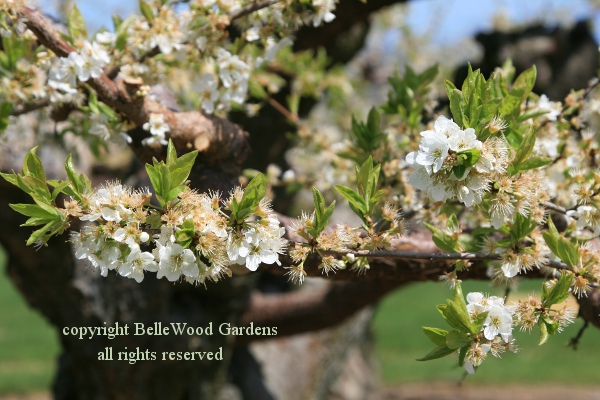
Plums flower earlier than peaches, and a better fruit set is achieved with cross pollination
between two different cultivars. Dick grows 'Red Ace', 'Shiro', and a few more.
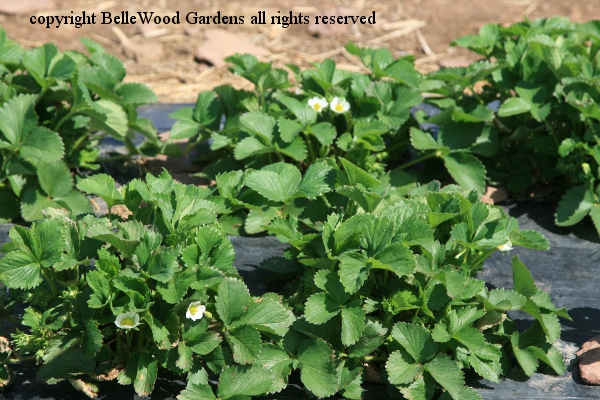
But the earliest fruit for sale will come with strawberries. Just look at these lush, healthy plants! If you remember, they were planted last year, all 200 of them. (Scroll down in the 2013 entry to see them.)
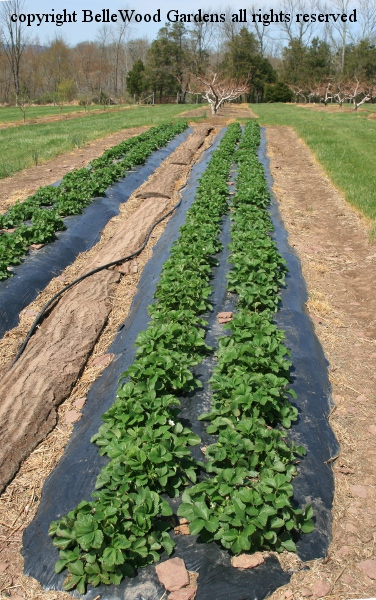
.
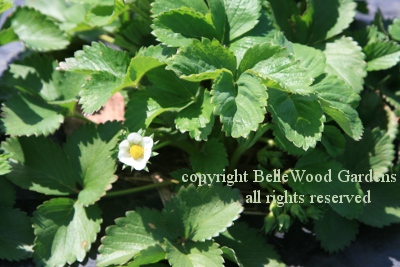
They're flowering, but bearing will be a little late since the weather is so cool.
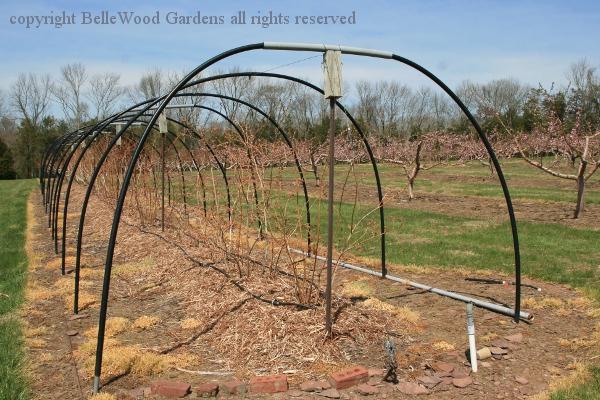
The framework for the netting over the blueberry bushes is in place, but not yet the netting itself. Dick cannot get it wide enough to cage with only one piece. Even doubled, 14 foot is too narrow. He is using 17 foot wide netting but does not seam it. What Dick does do is cover one side from the ground up, lay it over the top and partially down the opposite side. The second piece is up the opposite side, over the top, and partially down the first side. Thus there are two layers over the top, partially doubled near the top of each side, and a single layer completing each side. He said it is easy to lay out / flop over the top, and just clip to hold it in place.
So you see, it's not just a matter of planting, then sitting back while Mother Nature
does all the work. You are going to be working pretty darn hard too.
UPDATE: Thursday, 29 May 2014. I happened to speak to Dick today, and he mentioned that he's putting the netting in place now.
Back to Top
Back to April 2014